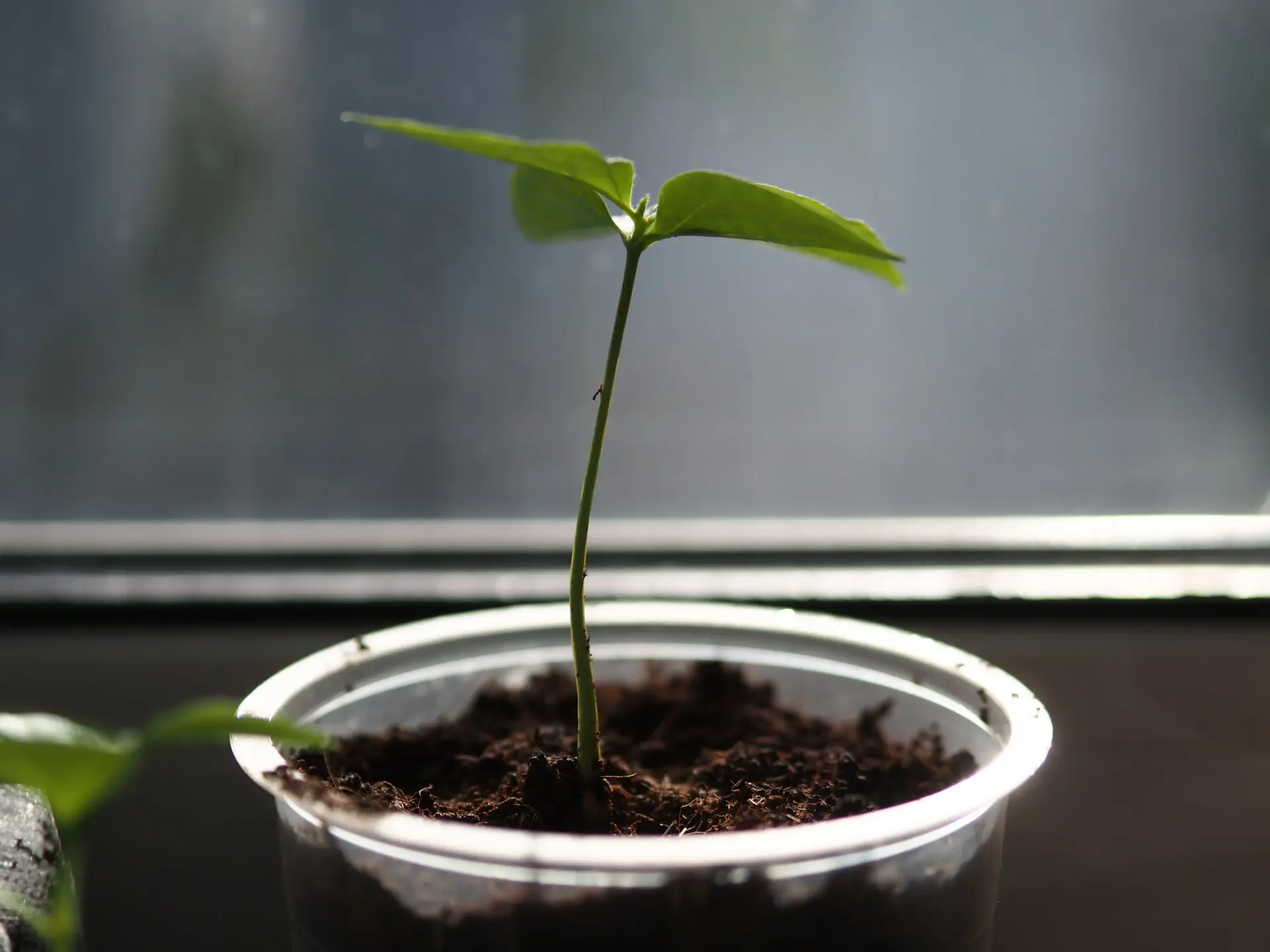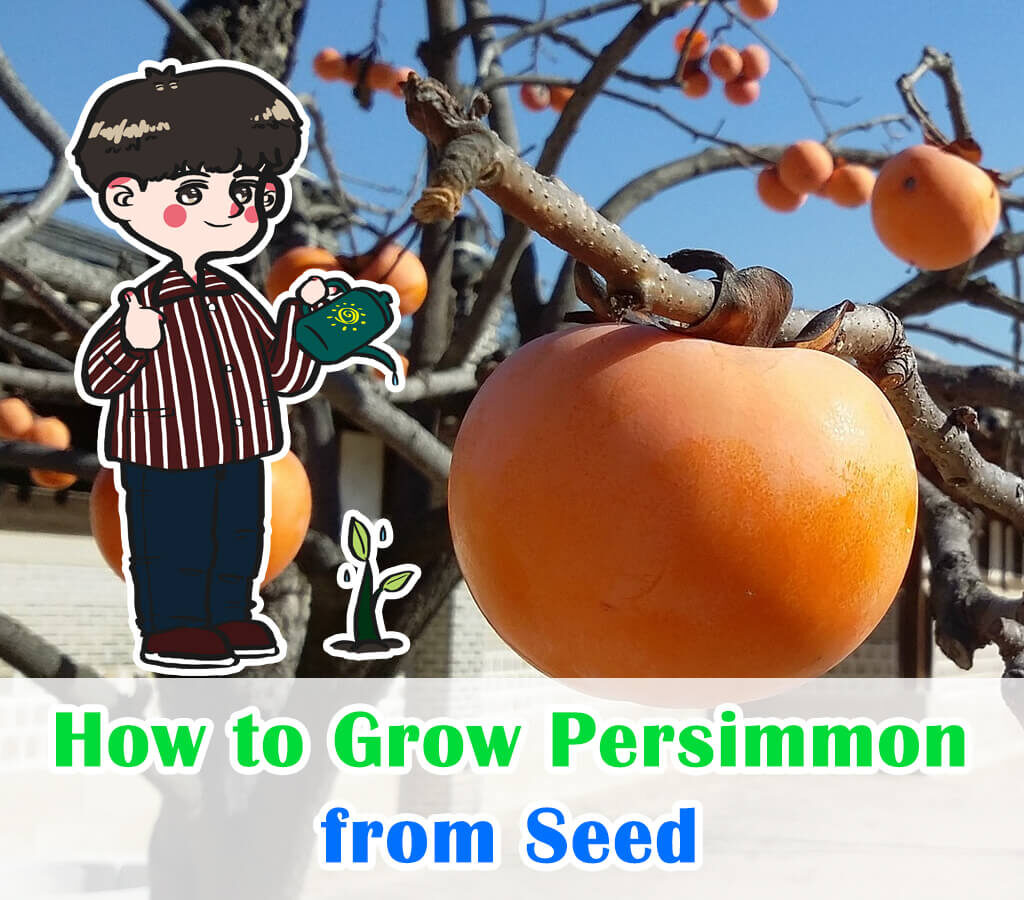Introduction
Persimmons are unique, flavorful fruits that bring a burst of color and nutrition to any garden. If you’ve ever thought about cultivating your own persimmon tree, there’s no better way to start than by learning how to grow persimmon from seed. This method is not only economical but also allows you to witness the entire growth process, from a tiny seed to a thriving tree.
Types of Persimmons
American Persimmon
The American persimmon is a species native to the United States, particularly in the eastern and central regions. It’s known for its smaller, sweeter fruit and its ability to withstand colder climates, making it a resilient option for growers in cooler areas.

Asian Persimmon
The Asian persimmon (Diospyros kaki) is larger and generally sweeter than its American cousin. This type of persimmon is more commonly found in grocery stores and is often preferred for fresh consumption due to its size and flavor.
Benefits of Growing Persimmons from Seed
Cost-effective
Purchasing a mature persimmon tree can be pricey. However, starting from seed is a budget-friendly alternative, offering the same end result with a bit more patience and care.
Personal Satisfaction
Growing a tree from seed is a fulfilling experience. Watching your persimmon tree grow and eventually bear fruit is a rewarding journey, providing not just fruit, but a sense of accomplishment.
Adapting to Local Conditions
When you grow a persimmon tree from seed, it has the advantage of adapting to your local environment right from the start. This often results in a healthier, more resilient tree that’s well-suited to your garden’s unique conditions.
Choosing the Right Persimmon Seed
Harvesting Seeds from Fruit
To start, you’ll need to obtain persimmon seeds. how to grow persimmon from seed The best way is by harvesting seeds from ripe persimmons. Make sure the fruit is fully mature before extracting the seeds, as this increases the likelihood of successful germination.
Selecting Viable Seeds
Not all seeds are created equal. After extraction, choose seeds that are large, plump, and free of damage. These are the seeds most likely to germinate and grow into healthy trees.
Preparing the Seeds
Cleaning the Seeds
Once you have your seeds, clean them thoroughly to remove any remaining fruit pulp. This can be done by rinsing them in water and gently scrubbing off any residue. Clean seeds are less likely to harbor mold or bacteria, which could impede germination.
Stratification Process
Persimmon seeds require a cold stratification period to break dormancy. This replicates the natural winter environment that seeds would encounter in their native habitat. Place your cleaned seeds in a plastic bag with a bit of damp sand or peat moss, then store them in the refrigerator for about 60-90 days.
Soaking the Seeds
After stratification, soak the seeds in warm water for 24 hours before planting. This process helps to break down the seed coat, allowing the seedling to sprout more easily.
Planting the Seeds
Ideal Soil Conditions
Persimmons prefer well-draining soil that’s slightly acidic to neutral (pH 6.0-7.5). If your soil is dense or clayey, how to grow persimmon from seed try mixing in compost or sand to enhance drainage.

Planting Depth and Spacing
Plant the seeds about 1-2 inches deep in the soil. If you’re planting multiple seeds, space them at least 3 feet apart to give them room to grow without competing for resources.
Watering and Initial Care
After planting the seeds, give them a good soak to keep the soil evenly moist without making it soggy. Continue to keep the soil moist during the germination period, which can take anywhere from 6 weeks to several months, depending on conditions.
Germination Process
Expected Germination Time
Persimmon seeds are known for their patience-testing germination time. It can take anywhere from 6 weeks to several months for a seed to sprout, so be prepared for a bit of a wait.
Factors Influencing Germination
Temperature, moisture, and the condition of the seeds all play significant roles in germination. Warmer temperatures and consistent moisture levels can help speed up the process.
Tips for Successful Germination
Patience is key when growing persimmons from seed. Ensure that the seeds remain undisturbed and consistently moist throughout the germination period. If possible, place the pots in a warm, sunny spot to encourage quicker sprouting.
Transplanting Seedlings
When to Transplant
Once your seedlings have developed a few sets of leaves and are about 6 inches tall, they’re ready to be transplanted. This usually happens a few months after germination.
Preparing the New Site
Choose a planting site that receives full sun and has well-draining soil. Persimmons prefer slightly acidic soil, so if necessary, amend the soil with organic matter to achieve the right pH balance.
How to Transplant Properly
Carefully take the seedling out of its pot, how to grow persimmon from seed ensuring that the roots remain undisturbed. Plant it in the prepared site, ensuring that the root ball is level with the soil surface. Water thoroughly after planting to help the seedling settle in.
Caring for Young Persimmon Trees
Watering Schedules
Young persimmon trees need consistent moisture, especially during the first year of growth. Water thoroughly every week, increasing frequency during periods of intense heat and dryness.
Fertilization Needs
In early spring, use a balanced fertilizer to encourage robust growth. Avoid over-fertilizing, as too much nitrogen can lead to excessive foliage growth at the expense of fruit production.
Pruning Practices
Trim young trees to shape them and eliminate any weak or overlapping branches. how to grow persimmon from seed This will encourage a strong structure and better fruit production in the future.

Disease Prevention
Fungal diseases like anthracnose and root rot can affect persimmons, especially in overly wet conditions. Ensure proper spacing for air circulation and avoid overwatering to minimize these risks.
Long-term Care for Persimmon Trees
Watering Mature Trees
As persimmon trees mature, they become more drought-tolerant. Water deeply every few weeks during dry periods, but be careful not to
